My wife went to Halide Edip Adivar High School in Üskudar, so when I read Irmak Yenisehirlioglu’s tweet, I was very intrigued (BTW @Irmak_Ye is no longer on Twitter):
“In 1925, as Halide Edip Adivar (1884-1964) was writing her memoirs on a farm in England; not far away, Virginia Woolf (1882-1941) was working on ‘To the Lighthouse’. Halide wrote directly in English and Virginia was intimate with Vita Sackville-West.” paraphrase quote @Irmak_Ye 19 Jun 2016.
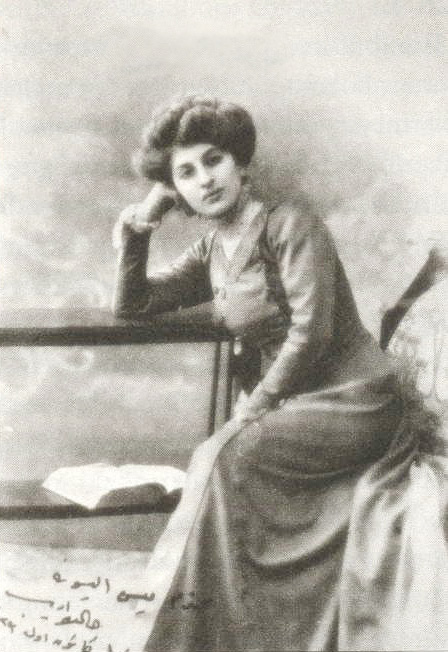
Halide Edip Adivar (1884-1964) was a Turkish novelist, educational and social reformer, nationalist, and political leader for women’s rights. Best known for her novels criticizing the low social status of Turkish women and what she saw as the lack of interest of most women in changing their situation.
On what farm did Edip write her memoirs in 1925?
My journey to answer the question, “on what farm did Edip write her memoirs in 1925,” starts with Halide Edip Adivar’s book: ‘Memoirs of Halide Edib’ With a frontispiece in color by Alexandre Pankoff and many illustrations from photographs. Published: 4 April 1927? (exact publication date unknown) by The Century Co., New York & London.[1]
It was when I was skip reading Halide Edip’s memoirs that I realised I had opened up a can of worms of names and dates. But the first significant name to spring out at me was Miss Isabel Fry.
Isabel Fry (1869-1958)[2] was an educationalist, social worker and reformer. Born into a famous reforming Quaker family, she was one of nine children. She taught at Roedean (1891-95) with Constance de la Cherois Crommelin (later Mrs John Masefield (important)). In 1895-ish she moved to London with Constance Crommelin, and eventually founded a school in Marylebone Road.
In 1908/1909 Halide Edip Adivar stayed with Isabel in Marylebone Road, London. And subsequently, Isabel visited Turkey for the first time herself in 1908/1909, and stayed with Halide Edip for three weeks.
For me, the whole story of Halide Edip in England revolves around her enduring friendship with Isabel Fry. My God, how the rich and famous flit around the world – even in the early 1900s!

This is the house that I believe is Rectory Farm, Great Hampden
In 1909 Isabel Fry bought Rectory Farm, Great Hampden, Buckinghamshire as a ‘summer cottage’ with her friends the poet and novelist John Masefield and his wife Constance. “It’s a lovely little farm in Buckinghamshire, high up on a chalk hill surrounded by beech woods and common land, a very fresh, pretty, but rather bare and cold country like most chalk hills. Said Masefield in 1909.” Forever England: The Life of Rupert Brooke By Mike Read[3]
John Masefield wrote ‘Gallipoli’ 1916.
Rectory Farm is the farm where Masefield read to Halide Edip: “One is a scene of Mr. Masefield’s ‘Pompeii,’ which he read to me in Miss Fry’s farm-house at Hampden. It was not published then, and I have not read it since, but it impressed me as most forceful.” Memoirs of Halide Edib 1909
Clearly Halide Edip was strongly influenced by her visit to England in 1909. She had met Edward Granville Browne (1862-1926)[4], Henry Woodd Nevinson (1856-1941)[5], obviously John Edward Masefield (1878-1967)[6] and I would have thought Isabel Fry’s brother Roger Eliot Fry (1866-1934)[7], who was a member of the Bloomsbury Group[8], to which Virginia Woolf[9] belonged.
Just to say, Roger Fry lived just down the road from Isabel’s home on Marylebone Road at 33 Fitzroy Square, Fitzrovia, London W1T 6EU.
In June 1912 Halide Edip visited Isabel Fry again. Halide took a flat in Cambridge Terrace, Regents Park, London. Here she wrote ‘New Turan’ (Yeni Turan – 1912). And Isabel started to take deprived children to Rectory Farm, for holidays and teaching.
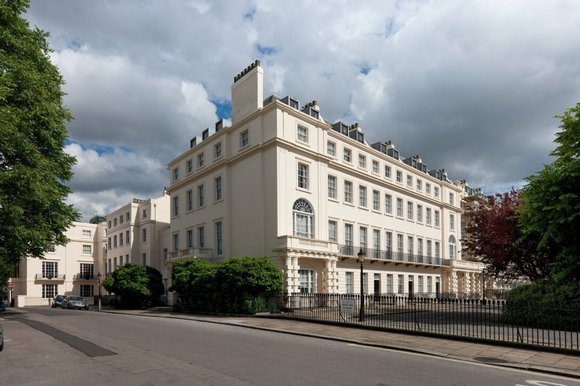 Cambridge Terrace a row of terraced mansions overlooking Regent’s Park, London Borough of Camden, London, England.
Cambridge Terrace a row of terraced mansions overlooking Regent’s Park, London Borough of Camden, London, England.
In 1914 Isabel Fry paid her second (and last) visit to Turkey, she sayed for one month. And John & Constance Masefield gave up Rectory Farm and moved to Lollingdon Farm in Berkshire.
In 1917 Isabel Fry founded The Farmhouse School, Mayortorne Manor, Wendover, Buckinghamshire. It was an experimental school in which training in farm and household duties were emphasised – She left in 1930.
In 1926 Halide Edib ‘and associates’ were accused of treason in Turkey! She and her husband escaped to Europe. They lived in Paris, London, the United States, and India from 1926 to 1939 when they returned to Turkey.
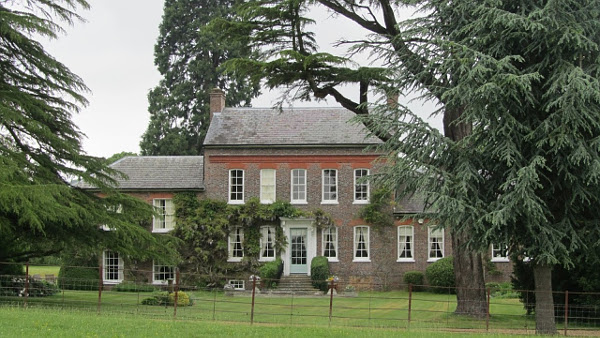
Were the ‘Memoirs of Halide Edib’ (1926/1927) written here at The Farmhouse School, Mayortorne Manor, Wendover, Buckinghamshire or at Rectory Farm, Great Hampden? Image: courtesy Paul Buck via: Chiltern Way 8: Saunderton to Cow Roast
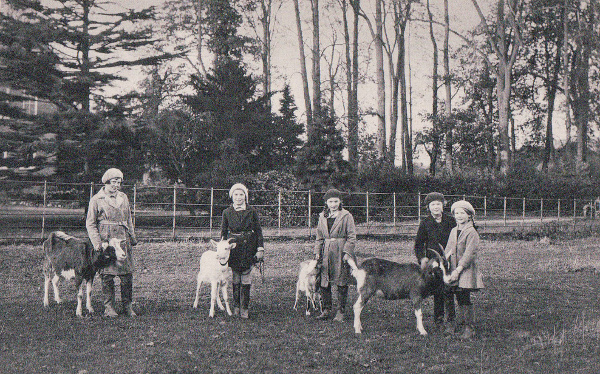
The Farmhouse School children with goats. Image: © All Rights Reserved Ewart White (deceased 21 May 2013) – seeking permission.
Halide Edib’s ‘The Turkish ordeal: Being the further memoirs of Halide Edib’ published: The Century Co., New York & London 1928.
Halide Edib is the first Turkish author to publish a novel written firstly in English: The Clown and His Daughter (Sinekli Bakkal) published: Allen & Unwin, 1935 London.
Halide Edip Adivar returned to Turkey (1939), and became professor of English literature at the Faculty of Letters in Istanbul University. In 1950, she was elected to Parliament, resigning in 1954.
It is my view that Halide Edip (and maybe her husband Adnan Adivar – but I doubt it) spent time with Isabel Fry between 1926 and 1930 at The Farmhouse School in Buckinghamshire; and ask yourself this: did Isabel Fry leave Rectory Farm at the same time as the Masefields in 1914?
References
- Memoirs of Halide Edib – the book
- Isabel Fry
- Forever England: The Life of Rupert Brooke By Mike Read – Google Books
- Edward Granville Browne (1862-1926) on Wiki
- Henry Woodd Nevinson (1856-1941) on Wiki
- John Edward Masefield (1878-1967) on Wiki
- Roger Eliot Fry (1866-1934) on Wiki
- Bloomsbury Group on Wiki
- Virginia Woolf on Wiki
If you are out there Irmak, send me a message.




 Cambridge Terrace a row of terraced mansions overlooking Regent’s Park, London Borough of Camden, London, England.
Cambridge Terrace a row of terraced mansions overlooking Regent’s Park, London Borough of Camden, London, England.


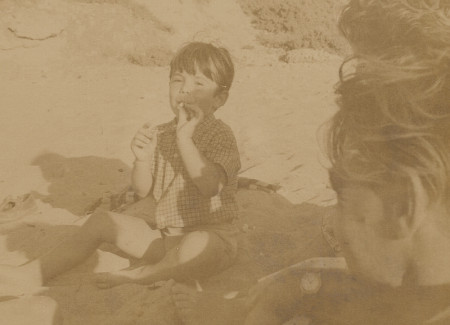
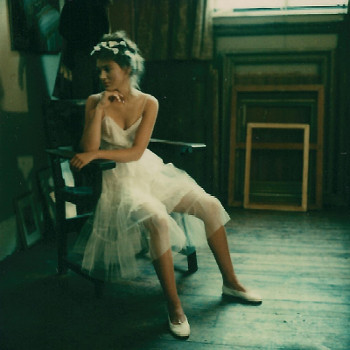
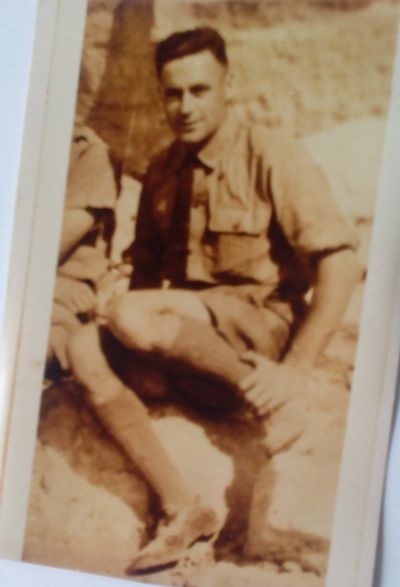 John Edward Robson, Aircraftman 1st Class, 84 Squadron, Royal Air Force Volunteer Reserve, died 29th November 1943, aged 31
John Edward Robson, Aircraftman 1st Class, 84 Squadron, Royal Air Force Volunteer Reserve, died 29th November 1943, aged 31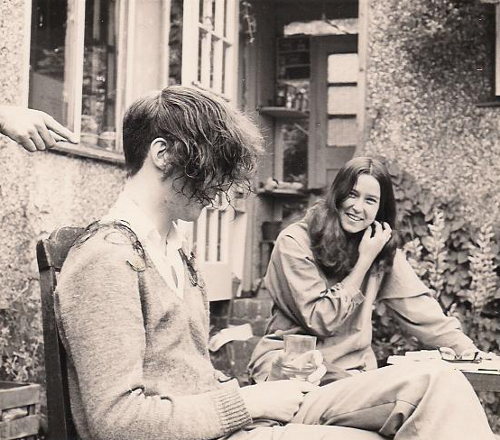
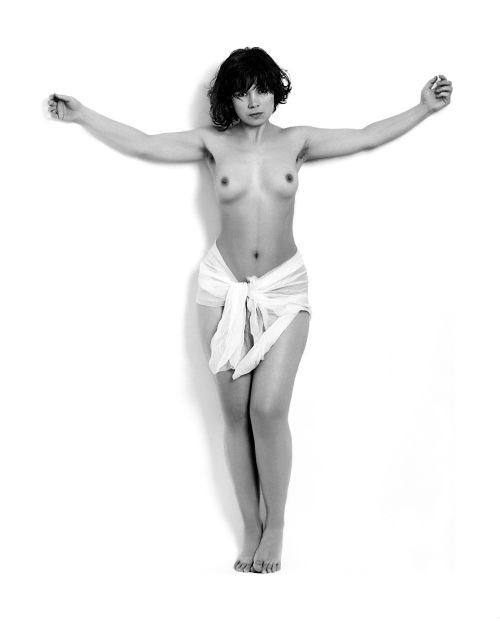 The Artist – Şükran Moral 1994
The Artist – Şükran Moral 1994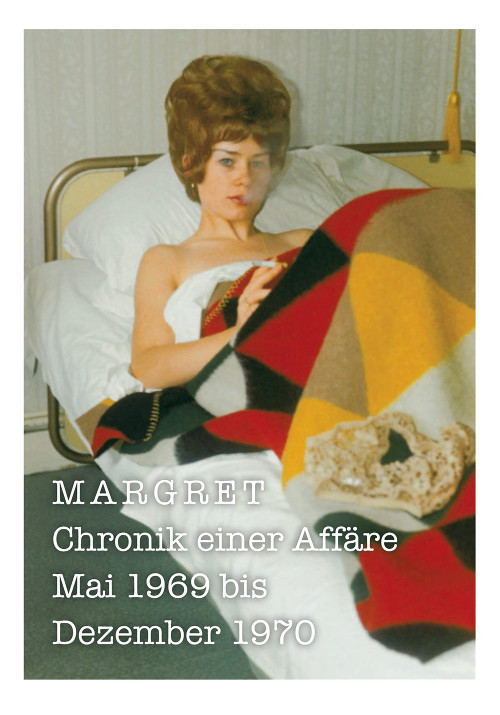 A love affair in a suitcase! Book cover, Margret: Chronik einer Affare Mais 1969 bis Dezember 1970 – Chronicle of an Affair May 1969 to December 1970. Compiled and Published by Nicole Delmes and Susanne Zander; text by Veit Loers and Susanne Pfeffer, at Verlag der Buchhandlung Walther Koenig, 2012. ISBN: 9783863352547. Out of print.
A love affair in a suitcase! Book cover, Margret: Chronik einer Affare Mais 1969 bis Dezember 1970 – Chronicle of an Affair May 1969 to December 1970. Compiled and Published by Nicole Delmes and Susanne Zander; text by Veit Loers and Susanne Pfeffer, at Verlag der Buchhandlung Walther Koenig, 2012. ISBN: 9783863352547. Out of print.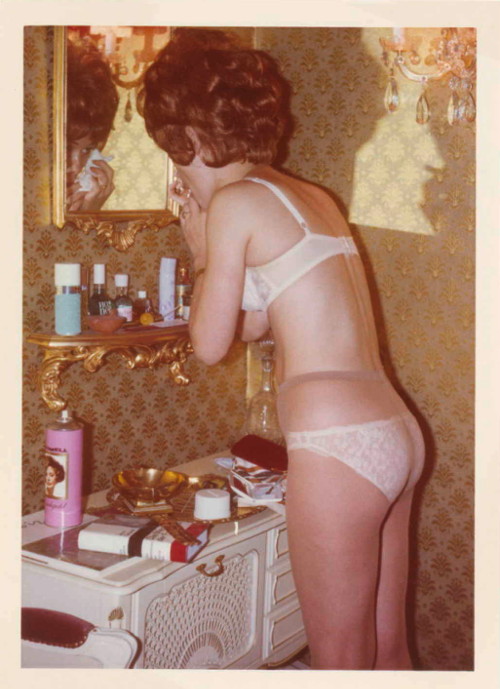 Günther K. “Margret” 7th December 1970; Original Vintage Print 13cm x 9cm.
Günther K. “Margret” 7th December 1970; Original Vintage Print 13cm x 9cm.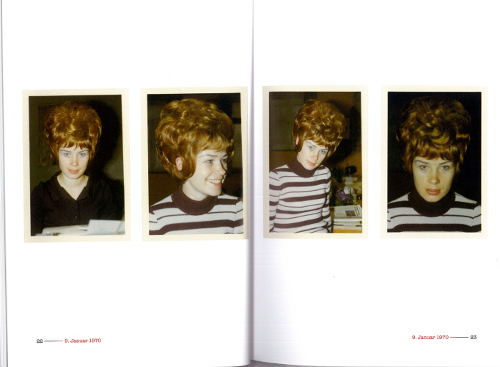 (great hair) Margret S. by Günther K. 9th January 1970 – pages 22-23.
(great hair) Margret S. by Günther K. 9th January 1970 – pages 22-23.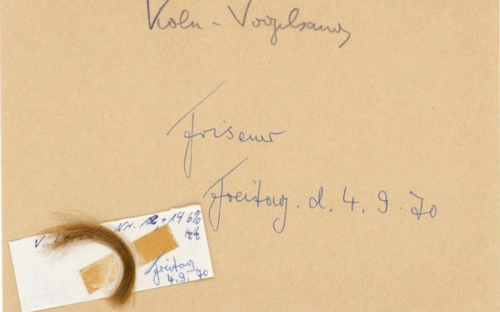 Dated, Friday 4th September 1970, has this hair sample been used by Margret’s hairdresser to either test a L’oreal hair colour (Récital was a very popular home hair colour that would fit the code?): 50% .12 + 50% .14 (a reddy-caramel-ish tint) + 6% H2O2 (20 volume peroxide) or was it to be passed on to her normal hairdresser? Just to say, all my colour formulae are my intellectual copyright – apart from Frances’s, which is, Wella Koleston Perfect: 50% 8/0 + 50% 9/0 + 20 Vol!
Dated, Friday 4th September 1970, has this hair sample been used by Margret’s hairdresser to either test a L’oreal hair colour (Récital was a very popular home hair colour that would fit the code?): 50% .12 + 50% .14 (a reddy-caramel-ish tint) + 6% H2O2 (20 volume peroxide) or was it to be passed on to her normal hairdresser? Just to say, all my colour formulae are my intellectual copyright – apart from Frances’s, which is, Wella Koleston Perfect: 50% 8/0 + 50% 9/0 + 20 Vol!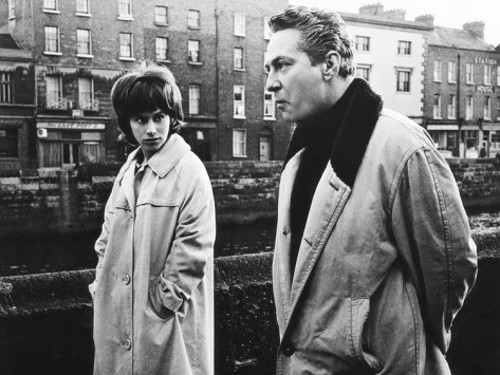 Rita Tushingham with Peter Finch in “Girl With Green Eyes” (1964)
Rita Tushingham with Peter Finch in “Girl With Green Eyes” (1964)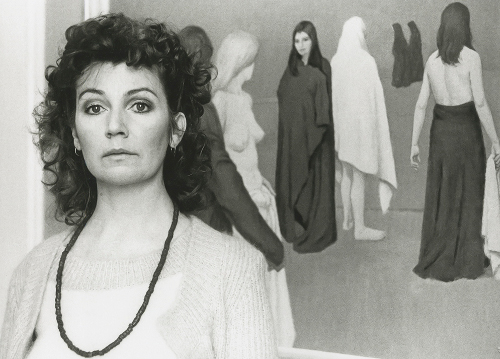 Edna O’Brien 1974. Photograph by & courtesy of Fay Godwin.
Edna O’Brien 1974. Photograph by & courtesy of Fay Godwin.